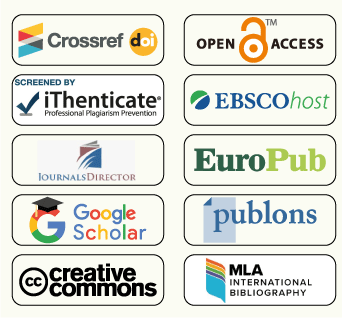Communication and emotions: the art of distinguishing, processing, and reacting
Abstract
The notion that emotion and media require more studies is undisputed. Media today are emotion generators: the football World Cup in Qatar, COVID-19 and the pandemic management in the global arena, the war between Russia and Ukraine, the influx of refugees on the Mediterranean coasts that cause tension between the European Union countries, and the latest Climate Change Convention hosted in Egypt (COP27) may fill us with anxiety, fear, and even worries. In addition, the news produced and shared through social media also impacts society, giving rise to primary emotions that, on many occasions, result in a reaction of acceptance, rejection, or even commitment. For example, the president of Ukraine seeks to develop positive feelings—empathy and compassion—on a global level with messages through social networks, such as: “We are grateful to everyone for supporting our values, for believing in Ukraine, and our victory. We feel that the world is supporting Ukraine, and this gives us strength in our struggle.” (@ZelenskyyuA, 5th of November 2022).
This exemplifies the colossal variety of emotions presented and distinguished through media platforms and also evoked by its users all around the globe. These examples not only reveal the need to research emotions from an interdisciplinary lens—philosophy, sociology, psychology, anthropology, media, and communication—but also lead us to transcend interpretive barriers related to ethics and objectivity, understand the existing nuances in the new interactions between the media and the audience; where sometimes, the audience ends up being placed in the center of the scene.
Returning to emotions, it is important to understand that they are presented as a fundamental component of social reality and they allow us to structure—in a certain sense, order—the world based on the distinction between closeness and distance. In this sense, according to the Communicative Theory of Emotions, we experience emotions when events occur that are important for our goals and plans; they represent events that challenge our primary narratives.
On the other hand, collective emotions also play a central role in that process: it is thanks to an emotional distinction of the environment that social realities achieve importance. In other words, emotions configure our cognitive systems and our social interactions. Many emotions concern our relationships, and empathy is central to our experience and understanding.
The analysis of emotions in the media also suggests that a variety of mechanisms is necessary to ensure that the standards of objectivity and professional ethics are respected in the media, where not everything that is presented seeks to impact the audience emotionally. For this, fresh and innovative ideas for news production and dissemination through news platforms are necessary as long as they meet the obligations of the press in terms of democracy and take into consideration the well-being of their workers, the journalists.
It is too early to predict how the media influence the audience’s emotions because this implies making a cut of a specific period to better understand the environment in which news and reactions occur. Yet one could confidently assume that the existing boundaries of media policies and social and ideological debates across countries are likely to determine the receptivity to specific proposals and suggest a diversity of emotional reactions where, for example, the hate discourse is gaining leadership, and it deserves further research. In addition, the coverage of gender violence is still a topic that deserves more attention in how it is presented in media—victimization, revictimization, victims’ empowerment, and how the readers react to them: empathy, pain, rejection, and disinterest.
Time will tell how the media and emotions are taking more space in our lives and how we develop self-awareness about that. I hope readers find this issue useful, inspiring, and challenging in different disciplines and contexts.Keywords
Full Text:
PDFDOI: http://dx.doi.org/10.21622/ilcc.2023.03.1.001
Refbacks
- There are currently no refbacks.
Copyright (c) 2024 Carolina Escudero

This work is licensed under a Creative Commons Attribution-NonCommercial 4.0 International License.
Insights into Language, Culture and Communication
E-ISSN: 2812-491X
P-ISSN: 2812-4901
Published by:
Academy Publishing Center (APC)
Arab Academy for Science, Technology and Maritime Transport (AASTMT)
Alexandria, Egypt
ilcc@aast.edu

